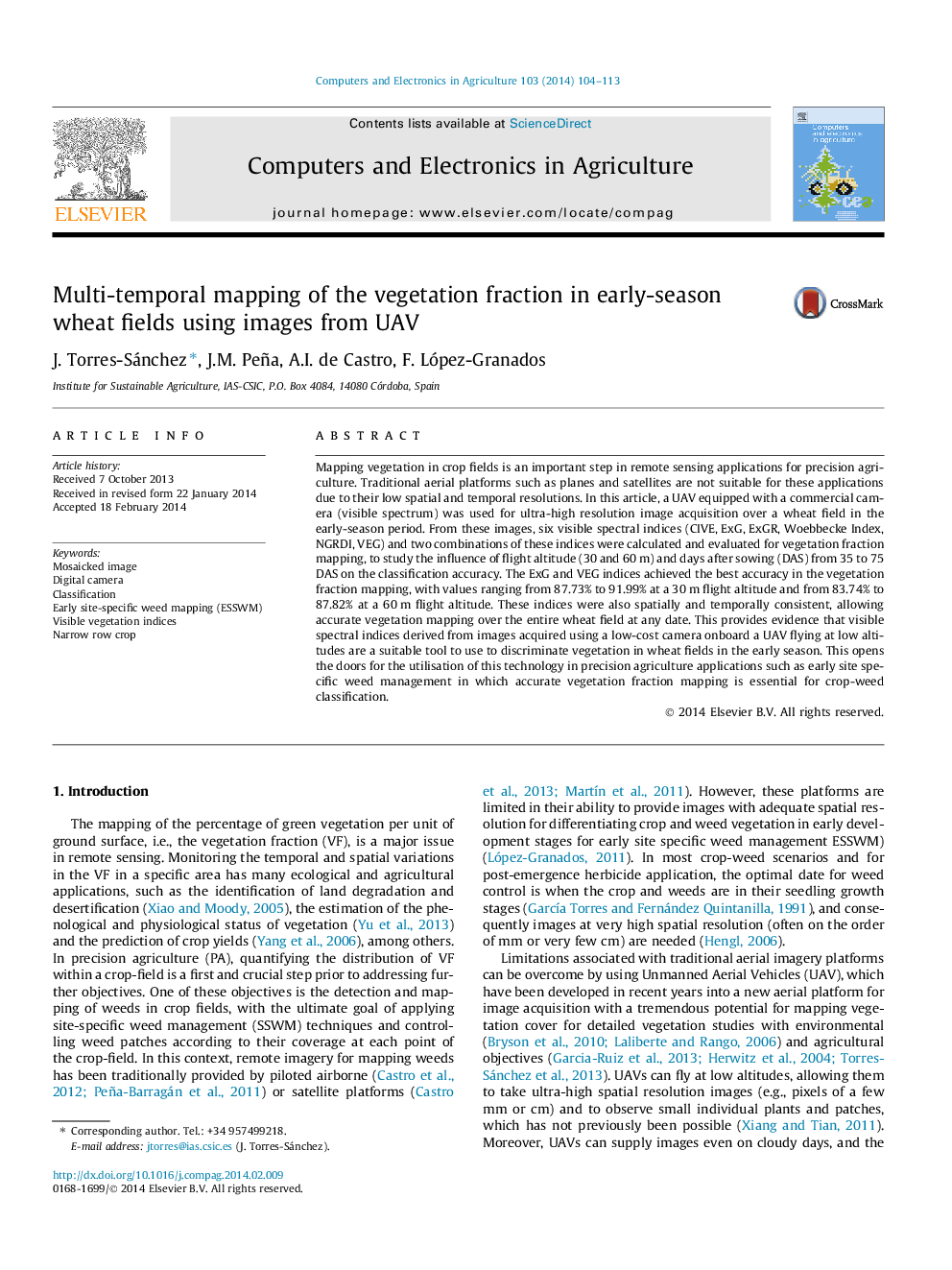| Article ID | Journal | Published Year | Pages | File Type |
|---|---|---|---|---|
| 84310 | Computers and Electronics in Agriculture | 2014 | 10 Pages |
•An UAV was used for multi-temporal quantification of vegetation fraction.•Overall classification accuracy up to 92% were achieved with visible vegetation.•The excess green index reported the best result for vegetation mapping with UAV imagery.•Flight altitude scarcely affected classification accuracy.•UAV imagery is suitable for analysis of narrow row crops as wheat.
Mapping vegetation in crop fields is an important step in remote sensing applications for precision agriculture. Traditional aerial platforms such as planes and satellites are not suitable for these applications due to their low spatial and temporal resolutions. In this article, a UAV equipped with a commercial camera (visible spectrum) was used for ultra-high resolution image acquisition over a wheat field in the early-season period. From these images, six visible spectral indices (CIVE, ExG, ExGR, Woebbecke Index, NGRDI, VEG) and two combinations of these indices were calculated and evaluated for vegetation fraction mapping, to study the influence of flight altitude (30 and 60 m) and days after sowing (DAS) from 35 to 75 DAS on the classification accuracy. The ExG and VEG indices achieved the best accuracy in the vegetation fraction mapping, with values ranging from 87.73% to 91.99% at a 30 m flight altitude and from 83.74% to 87.82% at a 60 m flight altitude. These indices were also spatially and temporally consistent, allowing accurate vegetation mapping over the entire wheat field at any date. This provides evidence that visible spectral indices derived from images acquired using a low-cost camera onboard a UAV flying at low altitudes are a suitable tool to use to discriminate vegetation in wheat fields in the early season. This opens the doors for the utilisation of this technology in precision agriculture applications such as early site specific weed management in which accurate vegetation fraction mapping is essential for crop-weed classification.
